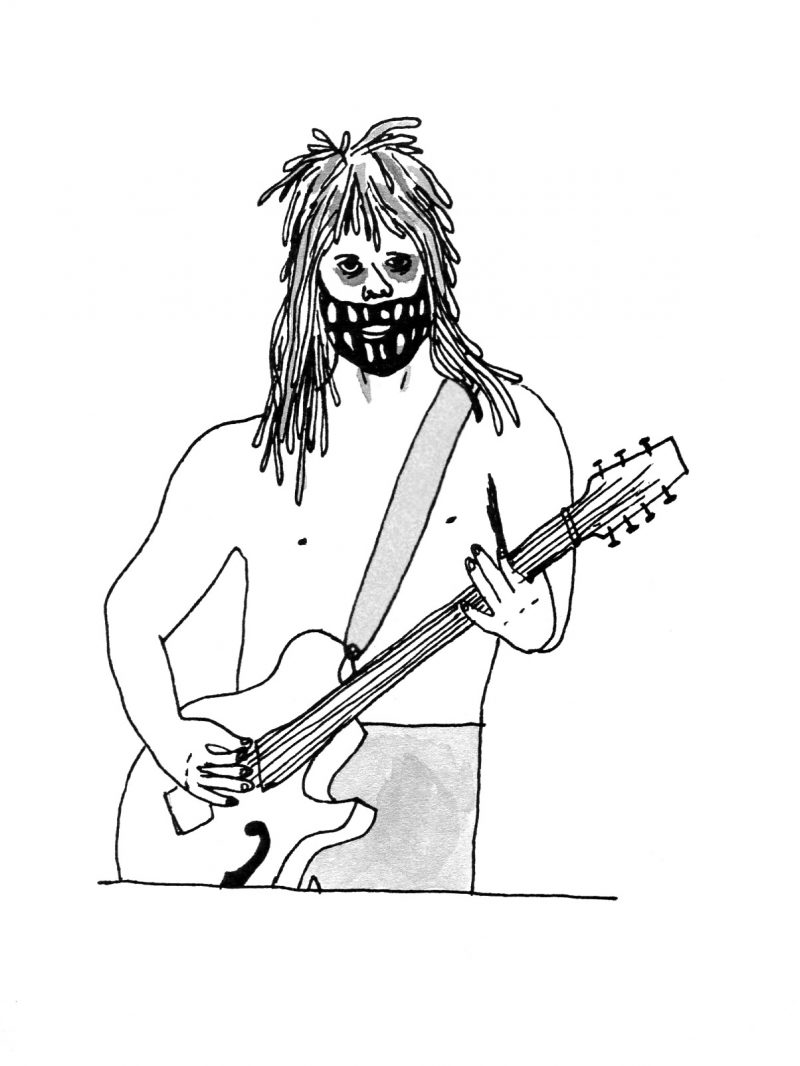This issue features a microinterview with Wes Borland, the longtime guitar player for Limp Bizkit, a rap-rock group that came to success in 1997 while touring in support of their debut album, Three Dollar Bill, Yall$. Wes was at the band’s core, yet he was unlike the other members. Onstage, he emerged with his bandmates from a giant toilet bowl, wearing heavy makeup, black contact lenses, and sometimes a bunny suit without the head. He carried a strange lawn ornament that he placed atop his amp before plugging in his guitar, a seven-stringed marlin-looking thing on which he could produce both electric and acoustic sounds. “There’re a lot of dynamics in our songs,” explained the then-twenty-two-year-old, “so this guitar is a broader tool.” Over the next decade, Borland would quit and rejoin Limp three times, take up keyboards and cello, and sing for Black Light Burns, whose new album debuts this fall. This interview took place while Borland was in Florida visiting his parents.
—Cole Louison
PART I
THE BELIEVER: Did you always dress up onstage?
WES BORLAND: Yes. I went to an arts high school, and had always been interested in sculpture and painting and drawing. Guitar kind of became a hobby of mine, and I had seen David Bowie and Kiss and Alice Cooper and Marilyn Manson—even GWAR—and so when I started playing in garage bands I started doing little things onstage that were nothing more than a mask or minor makeup, because the stage seemed like such an opportunity to do something outrageous. And it kept growing and growing and growing. When Limp got signed, that changed my aspirations from being in fine art. Being a musician was the job I didn’t expect, and I ended up going, “How can I incorporate this?”
BLVR: By the time we saw you on MTV, you had incorporated it. The makeup was not minor.
WB: Well, I was bored. There’s so much downtime on tour. I ended up going around and finding thrift stores and costume shops in towns, spending whatever per diem or money I had on makeup and lipstick, and I started putting outfits together. And as the band gained more success—like, suddenly I didn’t have to carry anything or tune my guitars—I had more resources for stage outfits, and I started thinking about the show all the time.
PART II
THE BELIEVER: On TV you seem to have two personas. The polite, uncomfortable guy on camera feels different than the bunny monster, whose energy is both very aggressive and very engaged.
WES BORLAND: It’s what allows me to have that power. And I’ve noticed that the more elaborate the costumes got over the years, the...
You have reached your article limit
Sign up for a digital subscription and continue reading all new issues, plus our entire archives, for just $1.50/month.
Already a subscriber? Sign in





